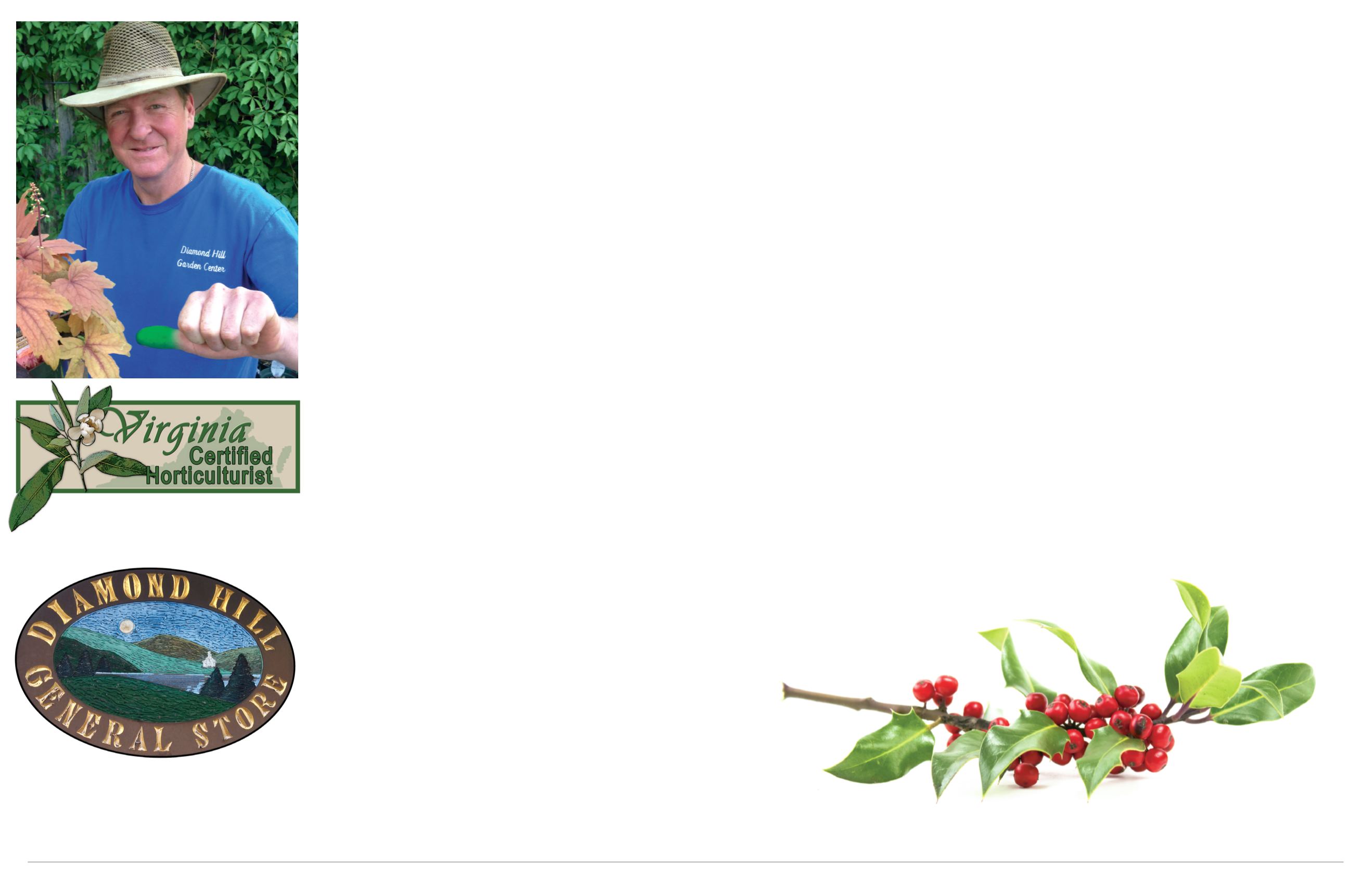
Discover Smith Mountain Lake
WINTER 2016
39
38
lovers, berries are an essential food source for our
feathered friends. There are countless trees and
shrubs that pull food duty, and these are just a few
to consider for our own appreciation as well.
As the temperature drops and the sun lowers in the
sky, chlorophyll production wanes, and some of our
plants’ leaves produce a last colorful hoorah worthy
of note. The countless varieties of maple and oak
trees dominate our vistas with bright reds, oranges,
purples and mixes thereof. They stoically provide
shade and substance to our yards and forests all
summer long… and then scream, “look at me” in the
fall, and we do, with much elation.
Though some what mundane during the growing
season, the burning bush shines like no other
during the fall, truly living up to its name. Another
versatile shrub, the Nandina, is a mainstay in the
local landscape. The many varieties available offer
different sizes and textures, and some even pull
double duty, providing both stunning color and
an abundance of berries. When using evergreens
as a back drop, the use of these chamelian like
plants provides a continuous flow to the landscape,
offering nary a dull moment.
Bark is often overlooked as a worthy reason to
add certain plants to our yards. Unusual color and
texure of a tree’s bark can provide an interesting
look as winter sets in. Forget the bite, the bark of
the stately Sycamore, the utilitarian Riverbirch, and
the colorful Crape Myrtle may give the impression
that they are in distress as they exfoliate, yet this
normal, natural shedding process yields ongoing
interest throughout the season. And, when winter
truly sets in and Mother Nature paints our world
white with snow, the Red Twig Dogwood and Coral
Bark Maple will handsomely reward you with their
irridescent bark colors.
When considering how your yard will reap
continuing rewards for you, don’t forget that some
plants can fall into the category of unsung heroes,
as they can also provide holiday beauty from
cuttings for wreaths and boughs. So don’t “fall”
for it, the off season is just the beginning for some
plants in your yard.
Weeder’s
Digest
Don’t “fall” for it.
Despite the fact that our gardening season is coming
to a close, there are many plants for which this is
their finest hour, extending our interests through
the dormant period to come. For some plants,
we allot precious space, time and expense to add
them to our yards specifically for this time of year.
Flowering trees and shrubs always seem to be the
belle of the ball when we consider new additions, but
don’t miss out on plants that berry, or whose foliage
changes, as well as those whose bark shows itself off
during winter.
Typically, when we consider berries, we think of
hollies first. The multiple varieties in all shapes and
sizes allow for infinite location options, either as
foundation plantings or as specimens. With some
exceptions, the Chinese varieties tend to be showier,
with bright red berries. The Japanese varieties are
more subtle, having black berries. Take care not to
overlook the native deciduous Winterberry holly,
which yields a truly stunning display of bright red
berries when its leaves drop.
In the category of unique to almost fake looking,
the also native Beautyberry boasts clusters of small
purple berries that last well into winter. For brave
souls, there is the incomparable Pyracantha, its
bold orange or red berries are rivaled only by its
daunting spiky thorns. For those of us who are bird
Remember, it never hurts to seek professional advice. You
can reach Bob Siren at Diamond Hill Garden Center at
540-297-7009 or email
Listen in to Garden Gab everyWednesday
from 9am - 10am onWSLK Radio


